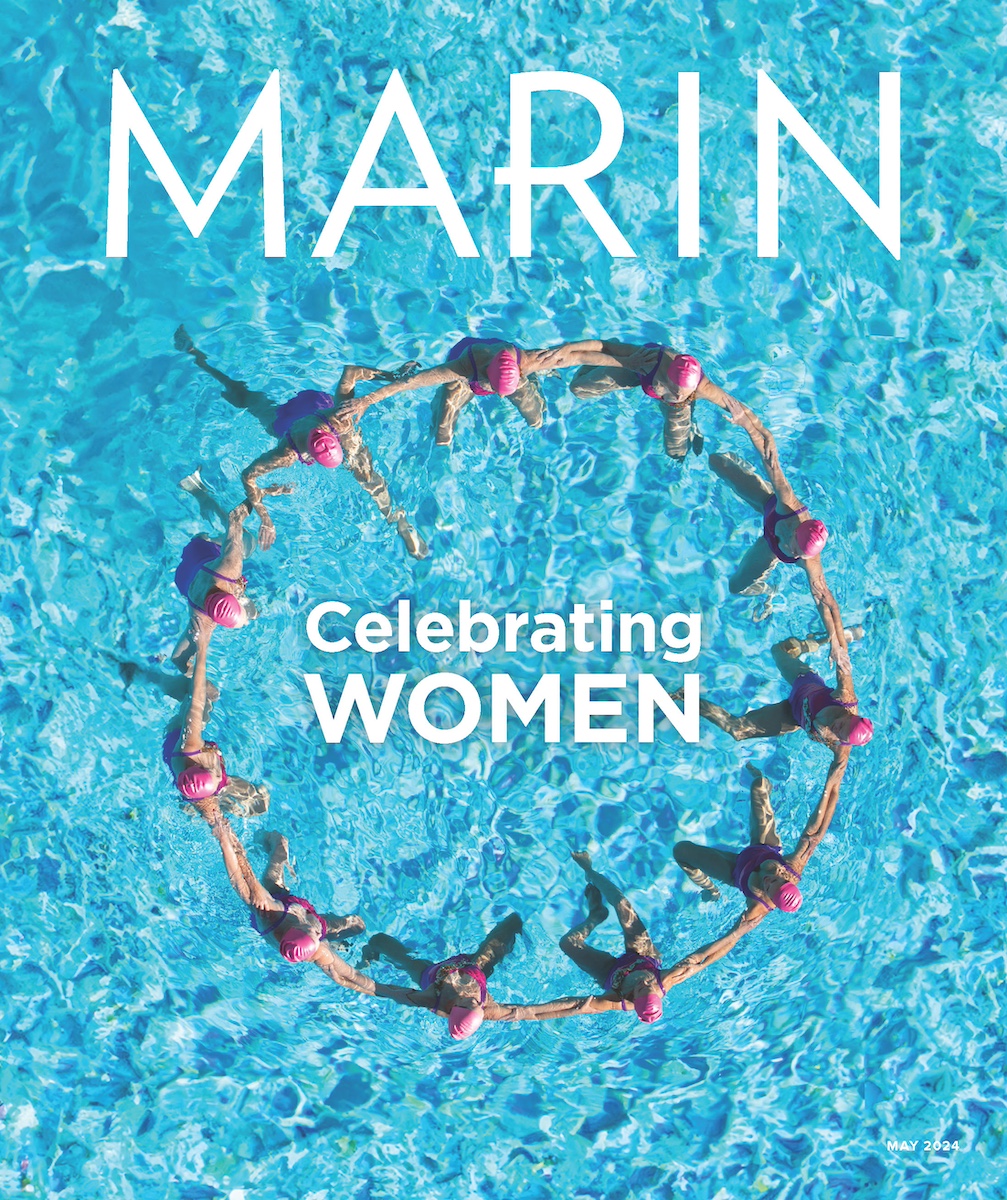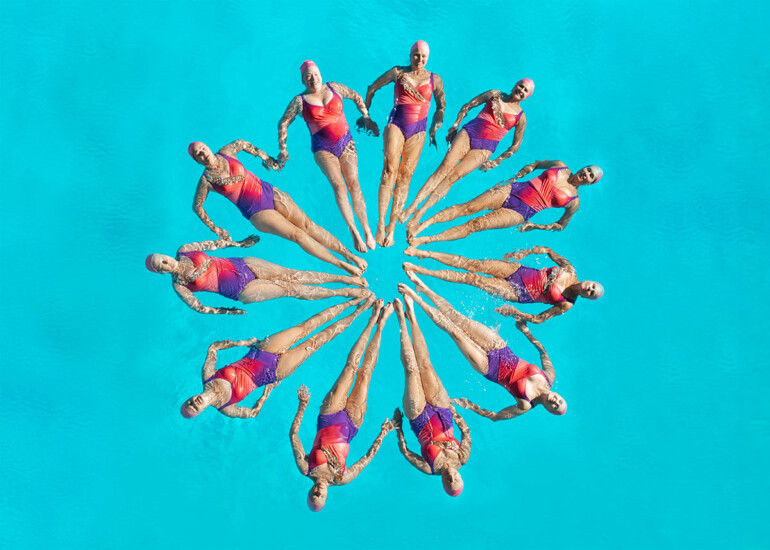A flyer posted on a downtown Mill Valley billboard was all it took to reignite Carey Clahan’s dormant passion for synchronized swimming. Clahan, a Mill Valley resident, started swimming at eight years old at the Santa Clara International Swim Center, a club renowned for producing Olympic swimmers such as diver Greg Louganis and, more recently, Michael Phelps and Katie Ledecky. After winning the Olympic junior team championships for the sport in the 1980’s with the club’s synchronized swim team, the Santa Clara Aquamaids, Clahan hung up her nose clip, worn out by the relentless pace of practices and meets.
Some 35 years later, in 2023, as Clahan stepped away from her business, Laughing Glass Cocktails, and sent her youngest child to college, she found herself in-between roles, uncertain of what came next. “I called the number on that flyer,” Clahan says.
Synchronized Swimming or Artistic Swimming?
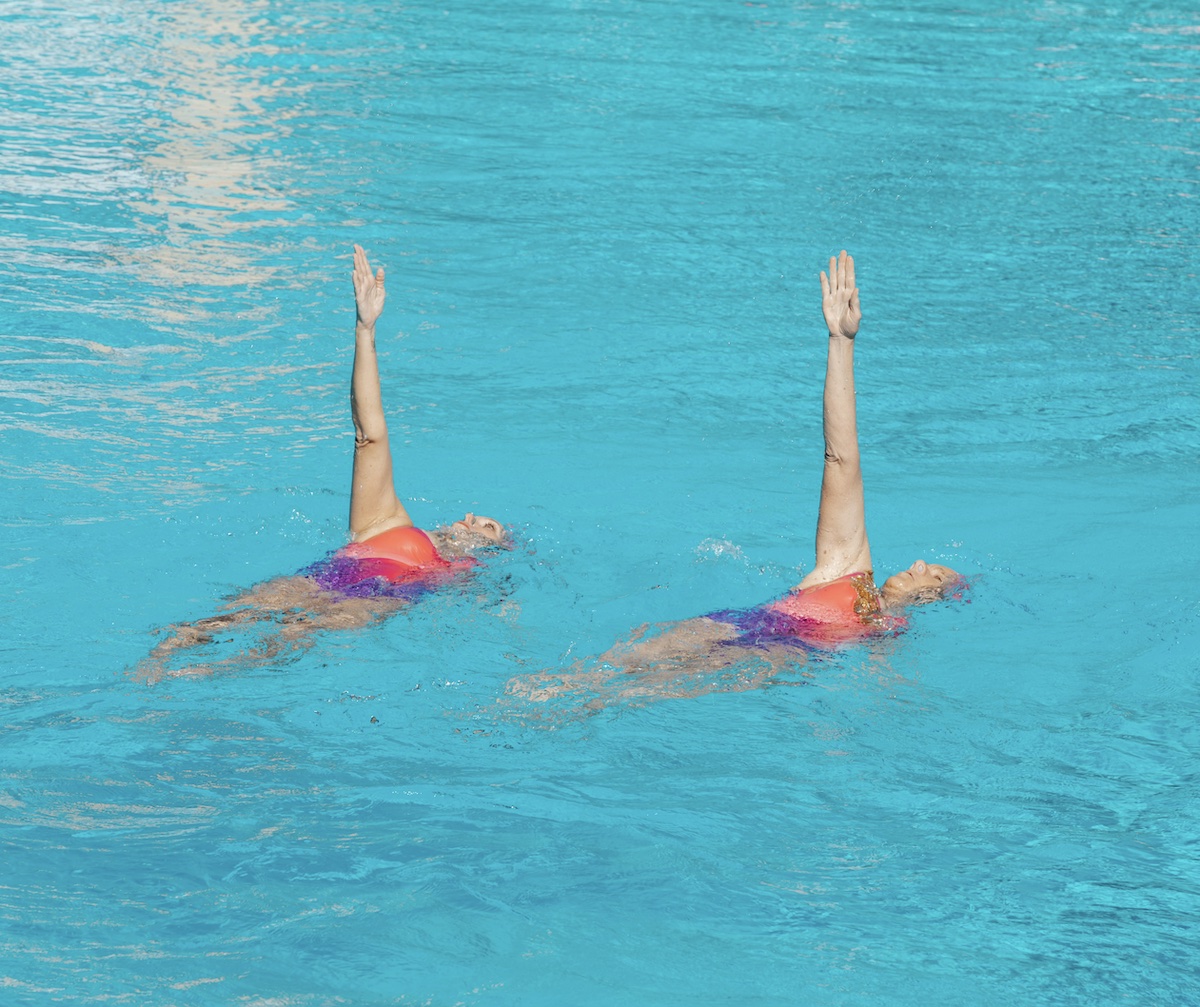
Known as water ballet when Esther Williams was swimming in the 1940s and ’50s, the sport, which Clahan likens to running a marathon while upside down, underwater and holding your breath, became synchronized swimming and is now known as artistic swimming. The name change is thanks to the sport’s governing body, World Aquatics. At the same time as the name change, “they made the sport more technical,” says Christine Schroeder, founder of Redwood Empire Synchro, and the swim coach whose phone number was on that flyer.
Schroeder likes the sport’s new name for its ability to capture the athleticism and different types of swimming the sport entails. Technical routines include required elements performed in a certain order, while free routines are judged on difficulty of the swimmer’s moves as well as on artistic impression. A newer category, acrobatic artistic swimming, includes moves like tossing, lifting and flying. “It’s gymnastics in the water,” says Schroeder, who notes that the changes make the sport more fun to watch. Yet another change made the sport more inclusive. Formerly only for women and girls, artistic swimming is now open to men and boys.
Beyond these changes, the lack of American participation at the sport’s most visible platform, the Olympics, is one reason for declining interest in the sport in the U.S., despite massive interest and participation in most other countries. In fact, the United States has not sent an artistic swimming team to the Olympics since 2008 and an American team hasn’t medaled in the sport since 2004. All that changes this summer. In their final opportunity at the World Championships in Doha, Qatar in February, the U.S. qualified and will send a team to Paris. Watch for them as they compete in Duet and in the eight person Free Team events.
A Through-Line from San Francisco to Marin and Sonoma
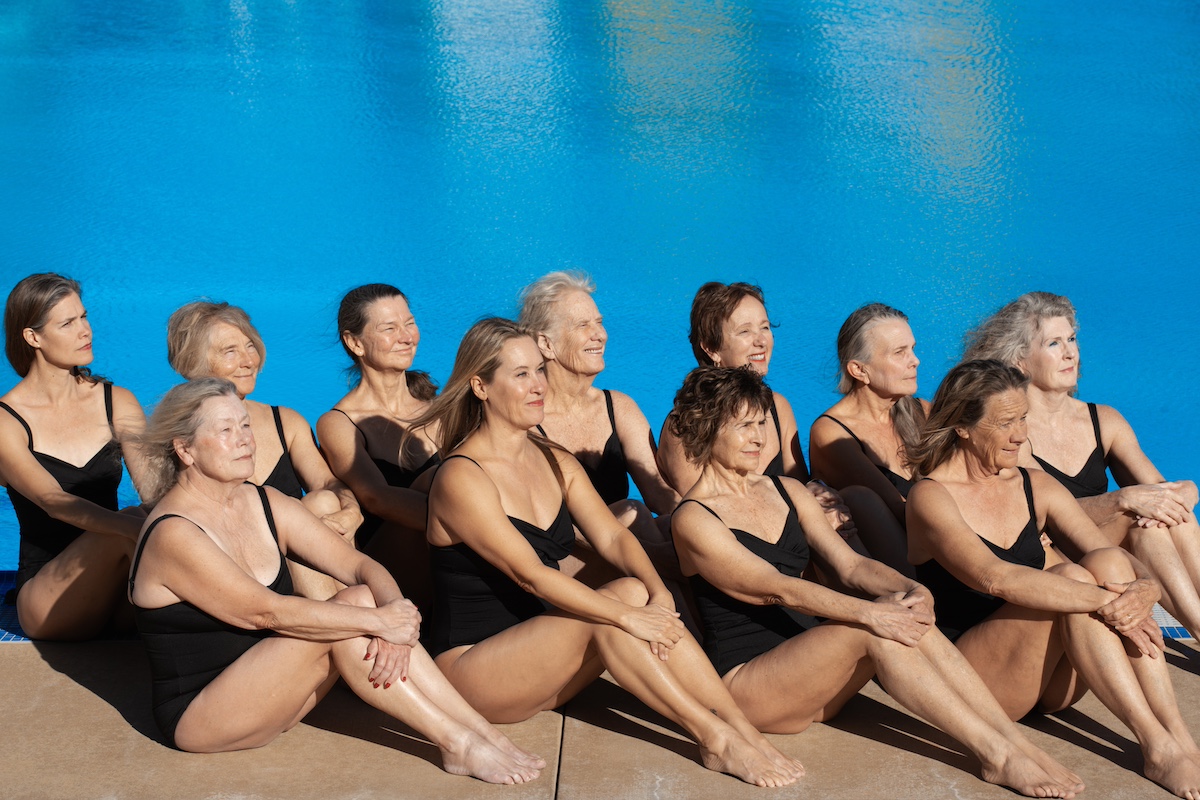
The sport’s history in the Bay Area can be traced back to at least the Esther Williams years. That’s when, in 1956, Marion Kane Elson launched the San Francisco Marionettes water ballet club, and a short time later at 12 years old, Chris Schroeder joined their Santa Rosa squad. “The sport was so much different then,” says Schroeder. “We focused more on artistry and grace. Now you hold yourself upright and perform athletic jumps with eggbeater — like water polo players do. We balance upside down, do spin moves and rocket boosts with pure upper body strength. Then we pop up and smile and try to make it all look easy!” Interesting to note, touching the bottom of the pool is never allowed and would lead to immediate disqualification in competition.
Terra Linda resident Schroeder began artistic swimming when she was 12 and swam with Kane’s Santa Rosa squad. Though she no longer teaches water exercise classes at the Marin YMCA, Schroeder continues to swim with old friends, such as Nancy Weiman, who swam with Schroeder in college in San Francisco (and is Masters Chairman for USA Artistic Swimming), and new friends, such as Clahan. She began coaching artistic swimming to kids in Marin in 2000 and Masters swimmers in 2006. The Masters club practices two to three times a week, usually at College of Marin’s Miwok Aquatics Center in Indian Valley, and draws swimmers from as far away as Pacifica and Walnut Creek.
Though not everyone who swims with the club decides to compete — and there is no club requirement to attend any meets — Schroeder and Clahan teamed up for the duet competition in August at World Aquatics Masters Championship in Kagoshima, Japan, nabbing silver in their age group. Clahan took home bronze for her age group (50–59 years old) solo, Weiman took home the gold for the 70–80-year-old cohort and Schroder nabbed silver in that category. At the 2023 Nationals meet in Tucson, Redwood Empire Synchro raked in the medals and awards, earning the High Point Trophy for the most points won by any team at the event, a repeat of 2022’s success.
Who Can Be an Artistic Swimmer?
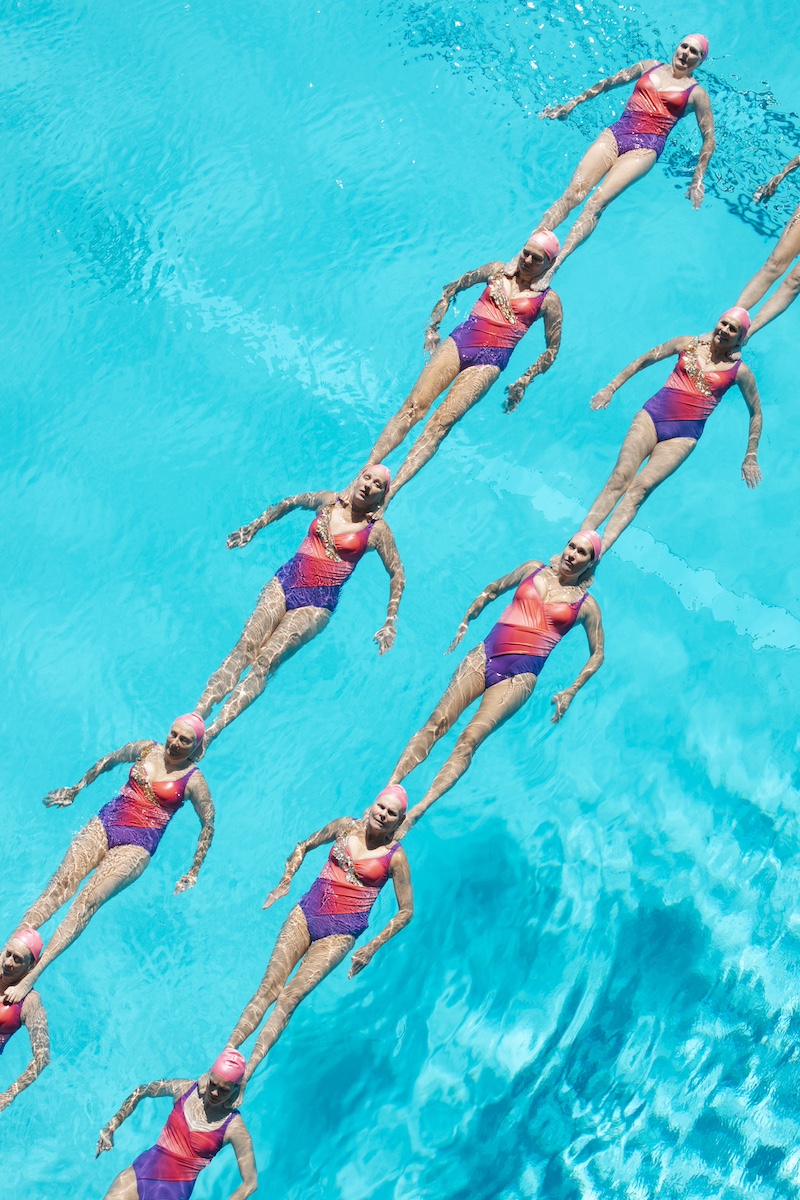
Artistic swimming, like other sports, is open to athletes of all ages. Schroeder, also a swim coach and lifeguard at Miwok Aquatics Center, notes the youth program, Aqua Marin Synchro, is open to anyone 20 years old or under. The Masters program is open to anyone of legal drinking age.
No previous experience is required. Both Aqua Marin and Redwood Empire Synchro are open to swimmers of all ages and abilities. “We meet them at their level,” says Schroeder, who is always on the lookout for girls and boys of all ages to create beauty in the water.
While Schroeder works to find and train the next generation of swimmers with Aqua Marin, the Masters club, coached by Aurore Simonnet, includes former gymnasts and golfers, ballet dancers and runners, and plenty of people who just love to have fun in the water. “We have swimmers who come in their 30s and 40s looking to learn a new skill,” Schroeder says.
The benefits are many. Most come swim for fitness, nearly weightless movement in the water and camaraderie. Some swim to travel and compete. Artistic swimming involves being a part of a community, working together to, as Schroeder puts it, make something fun and beautiful. “I always feel better when I get out of the pool,” she says. Clahan confirms: “It’s relationships and team camaraderie. And I’m in the best shape that I’ve been in for a long time. It’s joy.”
Kids’ tryout for Aqua Marin Artistic Swimming, May 11th, 2 p.m. Miwok Pool, 1800 Ignacio Blvd. Novato, CA 94949.
Adults can come and try artistic swimming, May 7th, 9:30-11 a.m. Miwok Pool, 1800 Ignacio Blvd. Novato, CA 94949.
For more information, please contact [email protected]
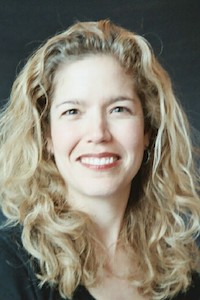
Christina Mueller is a long-time Bay Area food writer. She hails from the East Coast and has spent way too much time in South America and Europe. She discovered her talent as a wordsmith in college and her love of all things epicurean in grad school. She has written for Condé Nast Contract Publishing, Sunset, and the Marin Independent Journal, among others. She volunteers with California State Parks and at her childrens’ schools, and supports the Marin Audubon Society, PEN America, and Planned Parenthood. When she is not drinking wine by a fire, she is known to spend time with her extended family.
